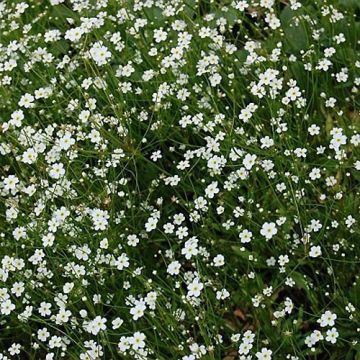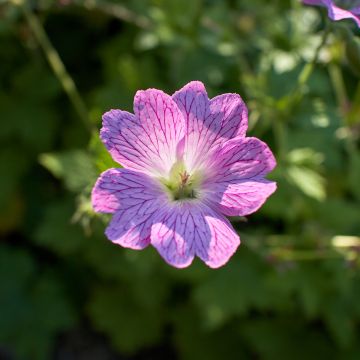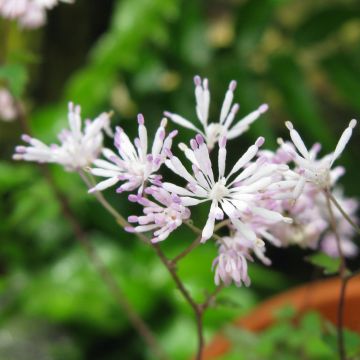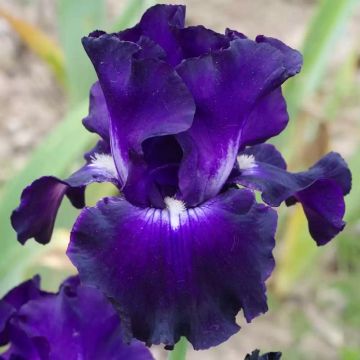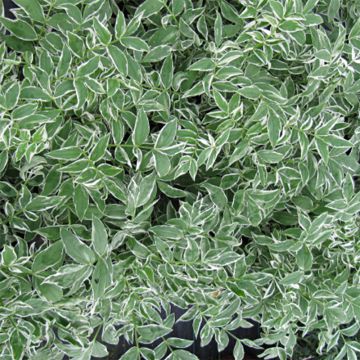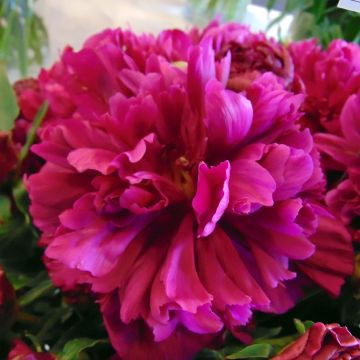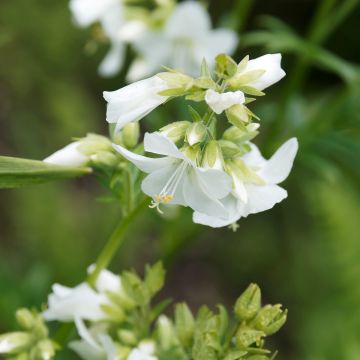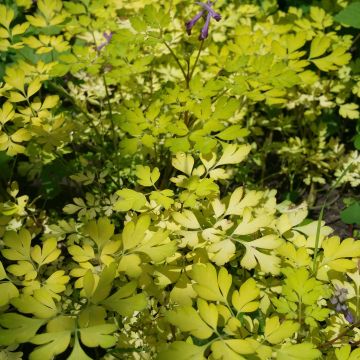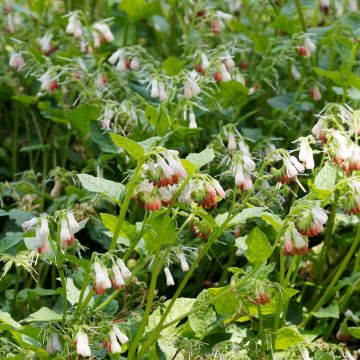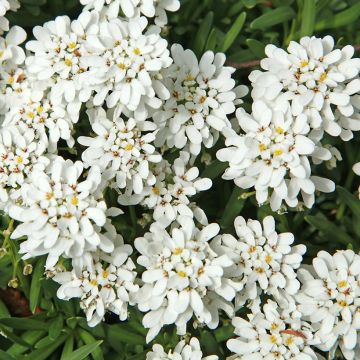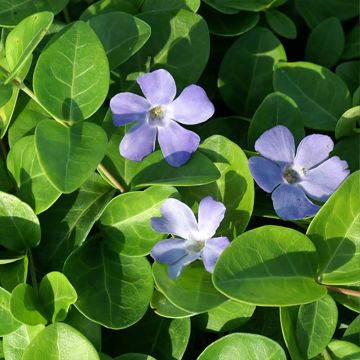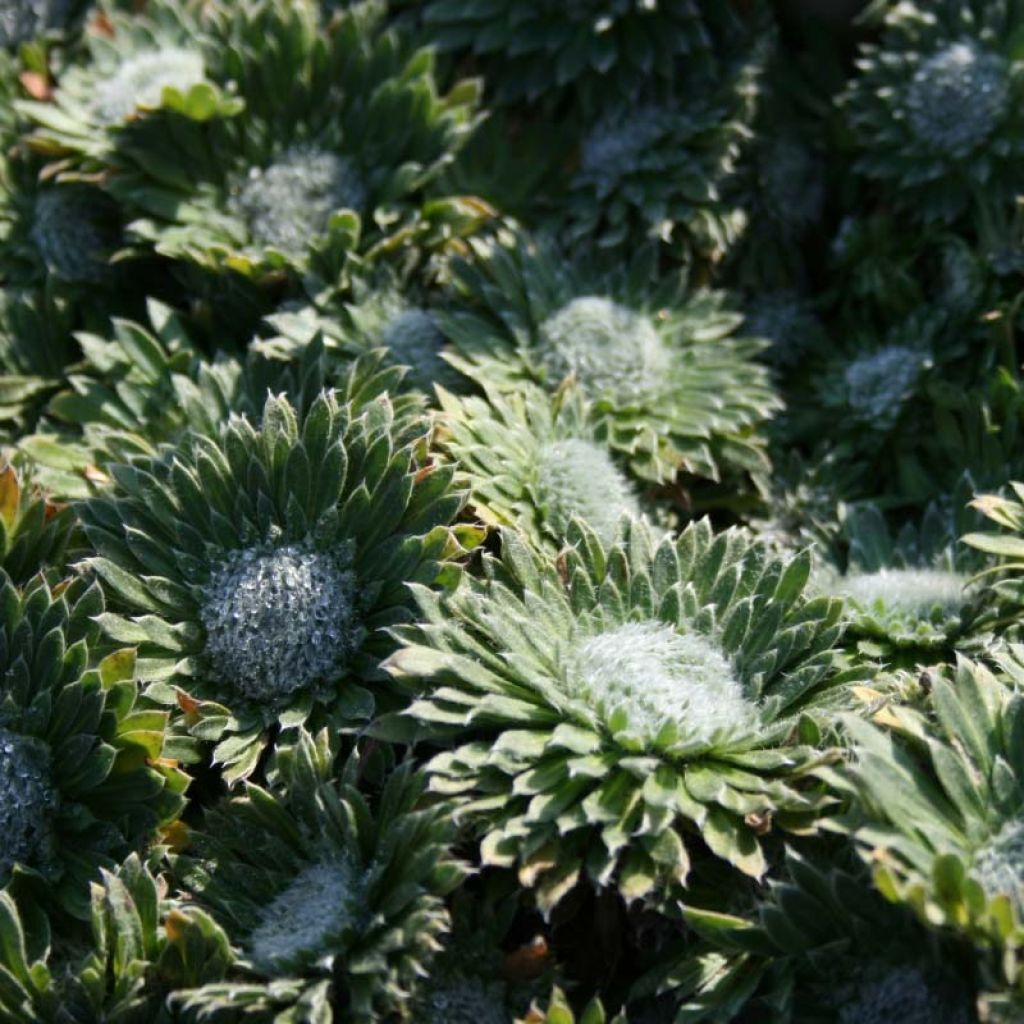

Androsace sarmentosa
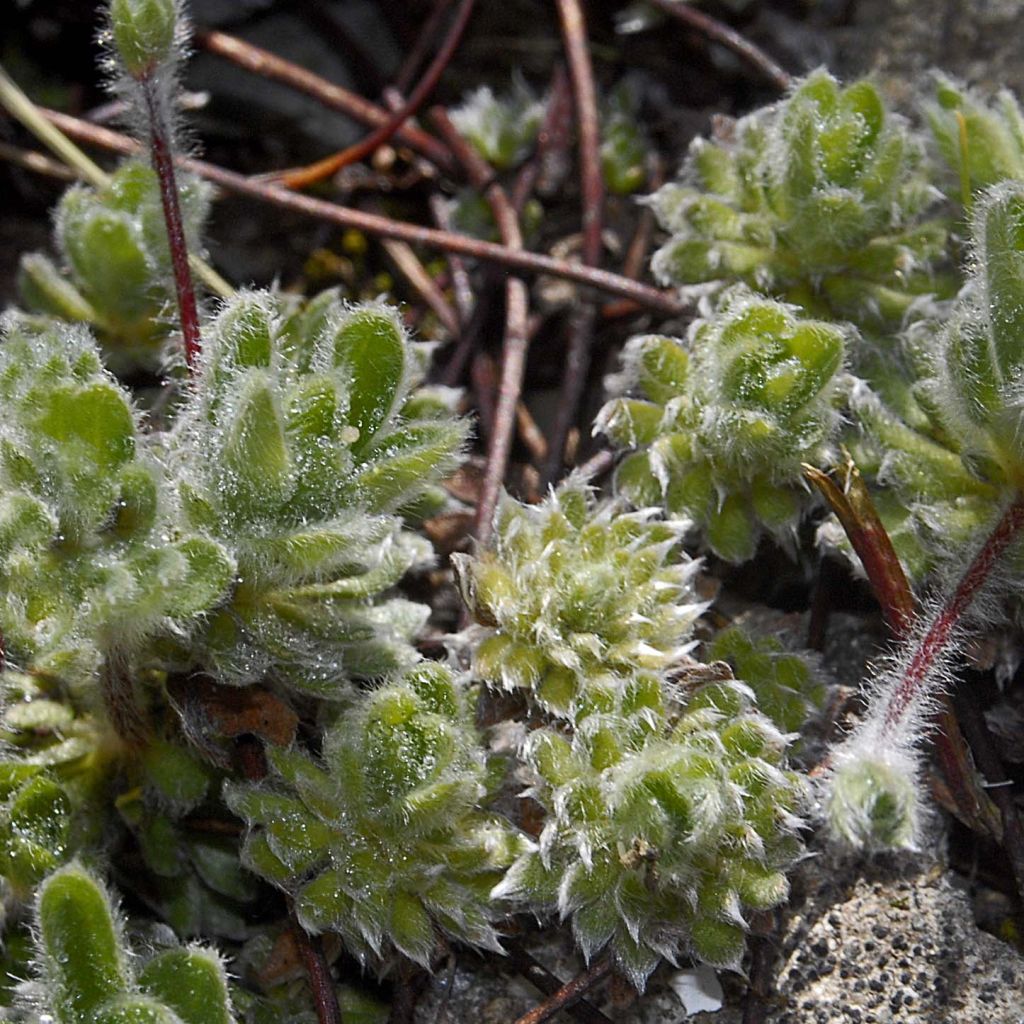

Androsace sarmentosa
Androsace sarmentosa
Androsace sarmentosa
Rock jasmine
Tiny naked young plant, honestly it's almost comical: the two rosettes present must measure half a cm each! And as it has also arrived damaged due to transportation, like almost all the other plants ordered so far, if it stays alive, it will take a long time before it looks presentable...
Michael, 12/04/2023
This plant carries a 12 months recovery warranty
More information
We guarantee the quality of our plants for a full growing cycle, and will replace at our expense any plant that fails to recover under normal climatic and planting conditions.
From €5.90 for pickup delivery and €6.90 for home delivery
Express home delivery from €8.90.
Delivery to Corse prohibited: UE law prohibits the import of this plant from mainland France to Corse as part of the fight against Xylella fastidiosa. Please accept our sincere apologies.
More information
Does this plant fit my garden?
Set up your Plantfit profile →
Description
Androsace sarmentosa, sometimes called Rock jasmine, is one of those pretty alpine perennials that have the gift of dressing stones and occupying the smallest cracks filled with neglected soil left by other plants. Slowly spreading as a very low cushion, it has a very pretty foliage covered with white hairs, which persists in winter, and is adorned in late spring with delicate displays of pink to mauve flowers with a yellow centre. In the garden, it works wonders in alpine rockeries, dry stone walls, or above walls, as long as the soil does not dry out too much.
Androsace sarmentosa belongs to the family Primulaceae, and is related to primroses. It is native to the Himalayas and western China, where it grows between 2,700 and 4,000 m (9 and 13ft) in altitude. It is a charming slow-growing perennial, forming stems that root upon contact with the ground. Ultimately, it measures 10 to 15 cm (4 to 6in) in height and 35 to 40 cm (14 to 16in) in spread. The leaves, 4 to 5 cm (2in) long, are simple and gathered in compact clusters (whorls) on the stems. They are lanceolate in shape and are dark green-blue enhanced by numerous short white hairs that give the cushion a silver shine throughout the year. The flowers, 7 to 9 mm (1in) in diameter, bloom in June-July, occasionally in August, gathered in small umbels above the foliage. Each flower has 5 light pink to mauve petals well spread around a yellow to red centre.
Fairly easy to grow in rocky or gravelly soil, but soil that is not too dry, this Androsace finds its place in raised beds, rockeries, on a wall, or on a slope, in association with other similar small plants, which won't risk suffocating it: choose, for example, saxifrages, gentians, or even Edelweiss, which appreciate the same environments. This plant is particularly suitable for alpine rockeries and alpine climates.
Report an error about the product description
Androsace sarmentosa in pictures
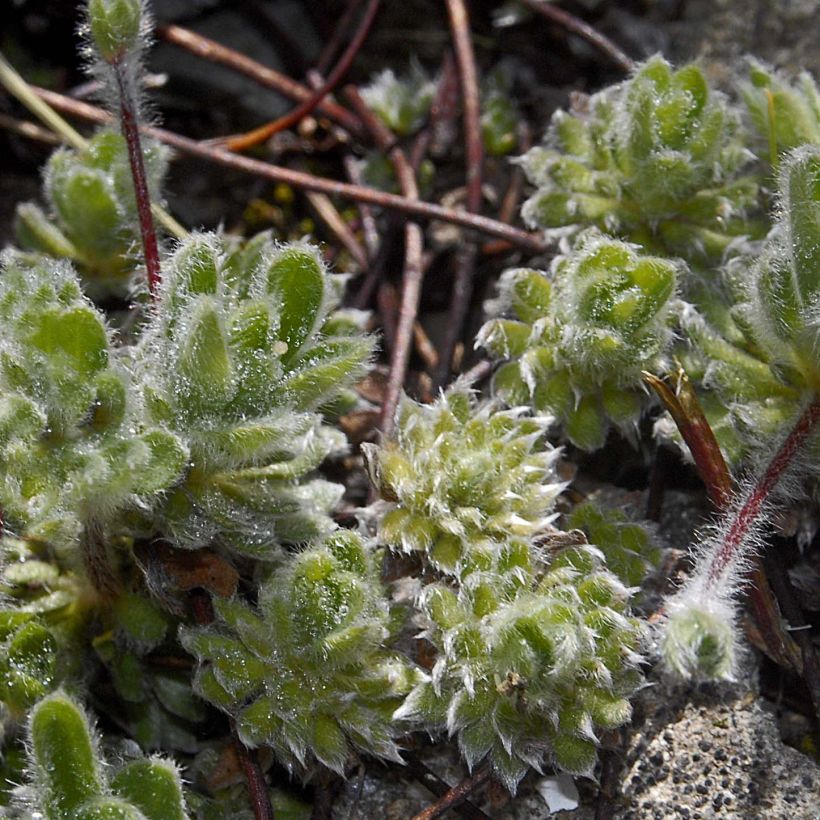

Flowering
Foliage
Plant habit
Botanical data
Androsace
sarmentosa
Primulaceae
Rock jasmine
Alps
Other Androsace
Planting and care
Androsace sarmentosa is a hardy alpine plant that is undemanding, but does not like heat or excessively dry and arid conditions. It grows in full sun or partial shade, in well-drained moist soil that isn't too poor but is preferably limestone and rocky. A pocket of compost arranged between large stones will suit it well, in a climate that is not too hot or too dry. It dislikes overly wet soils in winter and heavy soils, and appreciates cold and dry winters that prolong its lifespan.
Planting period
Intended location
Care
-
, onOrder confirmed
Reply from on Promesse de fleurs
Spring flowering perennials
Haven't found what you were looking for?
Hardiness is the lowest winter temperature a plant can endure without suffering serious damage or even dying. However, hardiness is affected by location (a sheltered area, such as a patio), protection (winter cover) and soil type (hardiness is improved by well-drained soil).

Photo Sharing Terms & Conditions
In order to encourage gardeners to interact and share their experiences, Promesse de fleurs offers various media enabling content to be uploaded onto its Site - in particular via the ‘Photo sharing’ module.
The User agrees to refrain from:
- Posting any content that is illegal, prejudicial, insulting, racist, inciteful to hatred, revisionist, contrary to public decency, that infringes on privacy or on the privacy rights of third parties, in particular the publicity rights of persons and goods, intellectual property rights, or the right to privacy.
- Submitting content on behalf of a third party;
- Impersonate the identity of a third party and/or publish any personal information about a third party;
In general, the User undertakes to refrain from any unethical behaviour.
All Content (in particular text, comments, files, images, photos, videos, creative works, etc.), which may be subject to property or intellectual property rights, image or other private rights, shall remain the property of the User, subject to the limited rights granted by the terms of the licence granted by Promesse de fleurs as stated below. Users are at liberty to publish or not to publish such Content on the Site, notably via the ‘Photo Sharing’ facility, and accept that this Content shall be made public and freely accessible, notably on the Internet.
Users further acknowledge, undertake to have ,and guarantee that they hold all necessary rights and permissions to publish such material on the Site, in particular with regard to the legislation in force pertaining to any privacy, property, intellectual property, image, or contractual rights, or rights of any other nature. By publishing such Content on the Site, Users acknowledge accepting full liability as publishers of the Content within the meaning of the law, and grant Promesse de fleurs, free of charge, an inclusive, worldwide licence for the said Content for the entire duration of its publication, including all reproduction, representation, up/downloading, displaying, performing, transmission, and storage rights.
Users also grant permission for their name to be linked to the Content and accept that this link may not always be made available.
By engaging in posting material, Users consent to their Content becoming automatically accessible on the Internet, in particular on other sites and/or blogs and/or web pages of the Promesse de fleurs site, including in particular social pages and the Promesse de fleurs catalogue.
Users may secure the removal of entrusted content free of charge by issuing a simple request via our contact form.
The flowering period indicated on our website applies to countries and regions located in USDA zone 8 (France, the United Kingdom, Ireland, the Netherlands, etc.)
It will vary according to where you live:
- In zones 9 to 10 (Italy, Spain, Greece, etc.), flowering will occur about 2 to 4 weeks earlier.
- In zones 6 to 7 (Germany, Poland, Slovenia, and lower mountainous regions), flowering will be delayed by 2 to 3 weeks.
- In zone 5 (Central Europe, Scandinavia), blooming will be delayed by 3 to 5 weeks.
In temperate climates, pruning of spring-flowering shrubs (forsythia, spireas, etc.) should be done just after flowering.
Pruning of summer-flowering shrubs (Indian Lilac, Perovskia, etc.) can be done in winter or spring.
In cold regions as well as with frost-sensitive plants, avoid pruning too early when severe frosts may still occur.
The planting period indicated on our website applies to countries and regions located in USDA zone 8 (France, United Kingdom, Ireland, Netherlands).
It will vary according to where you live:
- In Mediterranean zones (Marseille, Madrid, Milan, etc.), autumn and winter are the best planting periods.
- In continental zones (Strasbourg, Munich, Vienna, etc.), delay planting by 2 to 3 weeks in spring and bring it forward by 2 to 4 weeks in autumn.
- In mountainous regions (the Alps, Pyrenees, Carpathians, etc.), it is best to plant in late spring (May-June) or late summer (August-September).
The harvesting period indicated on our website applies to countries and regions in USDA zone 8 (France, England, Ireland, the Netherlands).
In colder areas (Scandinavia, Poland, Austria...) fruit and vegetable harvests are likely to be delayed by 3-4 weeks.
In warmer areas (Italy, Spain, Greece, etc.), harvesting will probably take place earlier, depending on weather conditions.
The sowing periods indicated on our website apply to countries and regions within USDA Zone 8 (France, UK, Ireland, Netherlands).
In colder areas (Scandinavia, Poland, Austria...), delay any outdoor sowing by 3-4 weeks, or sow under glass.
In warmer climes (Italy, Spain, Greece, etc.), bring outdoor sowing forward by a few weeks.

































